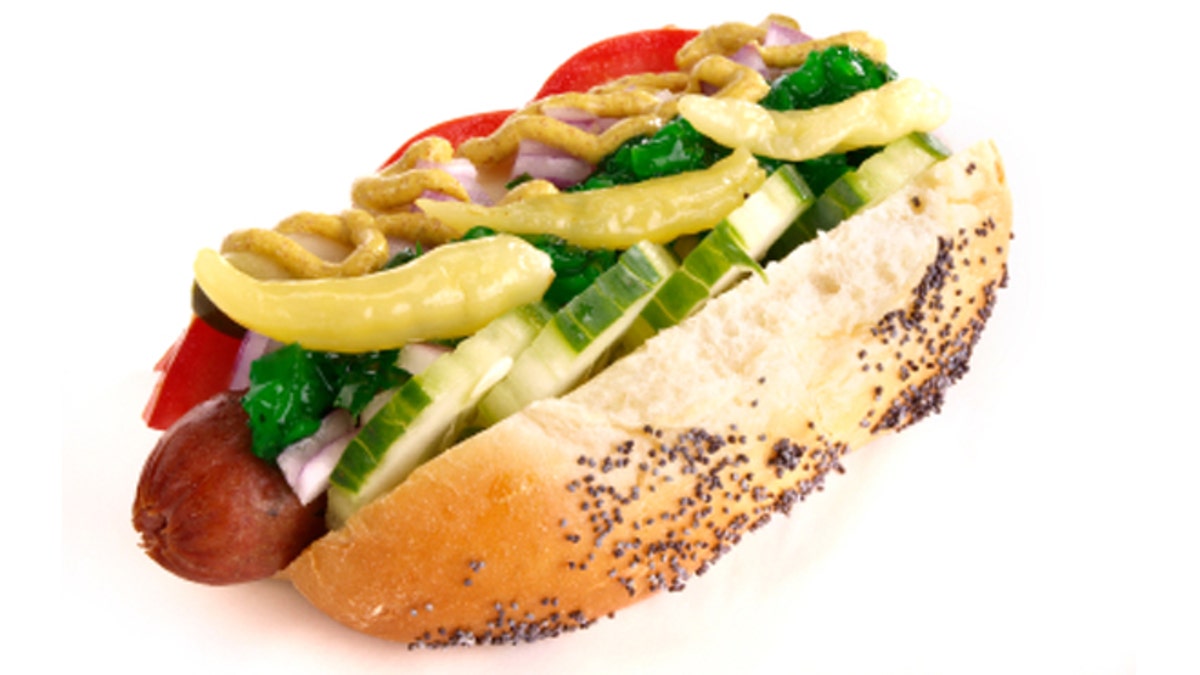
(iStock)
Ball games, barbecues, and boardwalks all share one very tasty link — the hot dog. Although it's about as iconic as a food can get in this country, the wiener’s origin remains surprisingly unclear. On one point, however, we’re all in agreement: On a summer afternoon, it’s perfect washed down with a glass of something bubbly and ice-cold.
Yet there are lots of ways to prepare this most crowd-pleasing of treats — and just as many experts out there who are elevating the art of the dog. To start, there’s the choice of the meat itself, then the cooking method (grilling, boiling, deep-frying), the matter of what to put on top (salty, sweet, cheesy), and how to handle the bun (toasted, soft, handmade). To help us assess the options and learn how to create the perfect hot dog at home — after all, most of us don’t have access to equipment more advanced than a stovetop or a barbecue — we checked in with masters Randy Watts of Nathan’s Famous, Hot Doug’s Doug Sohn in Chicago, and Gloria Pink of Pink’s in Hollywood, to name just a few.
Grilling was the most popular method of cooking on the East Coast, with steaming and boiling coming out on top in the Midwest — but otherwise the tips and tricks were unpredictable, even surprising. Why? Because, ultimately, it all comes down to taste buds — whether you like biting into a charred dog dressed with a single strand of handmade Dijon mustard or a deep-fried version heaped with a mess of coleslaw that spills down your chin. Dig in.
1. Shop Around
"More and more specialty markets are carrying quality, exotic types of meat in addition to the kind we’re most used to," explains Doug Sohn of Chicago’s Hot Doug’s, where people queue around the block for alligator and wild boar dogs. It’s worth branching out — at least once. Whole Foods and Fairway, for example, now stock different types of pork, lamb, chicken, and even veal, but, says Sohn, your best bet is checking with your local butcher for super-fresh varieties. Working with unfamiliar meats can be trickier, though, so be sure to cook dogs all the way through.
2. Pre-Season the Meat
A little preparation goes a long way. "Steep fresh bratwurst in a mixture of beer and onions before finishing it on the grill," advises Sohn. The flavor complements the saltiness of the dog. Keep in mind that all beer is not created equal; Randy Watts of Nathan's Famous recommends using an amber or dark brew like Yuengling.
3. It’s All About the Casing
The one thing you don’t want to do is throw a fresh dog on the grill right away. Instead, render it for four to five minutes to tenderize the casing. Once that happens, Joshua Sharkey of Bark in Brooklyn, N.Y., prefers to throw it on a griddle in order to preserve the fat. When it’s almost done, raise the griddle’s heat, which will crisp up the casing. When you bite into the meat, you’ll get that "satisfying snap." Sohn concurs — for the most part. "Cook the sausage at 350 degrees in the oven until the casing firms up, then throw it on the grill." If you throw it directly on the grill, the casing tends to stick, causing tears that result in the loss of some of the flavor.
4. Master the Grill
"Hot dogs are very forgiving," explains Sohn. "They're already cooked, smoked, or cured, so what you're really looking to do is get them hot." Grill the hot dog on medium to high heat, rolling it lightly the whole time to ensure you get nice char marks on the outside for flavor. If you don't have a grill, advises Watts, you can use a frying pan or a portable griddle (usually used for making pancakes or eggs) that you can set over your char broiler. Watts elaborates: "The key is to grill it at an average temperature, not too low, and not too high, just a consistent heat for about 10 to 12 minutes so that the hot dog browns slowly. It should reach a very high internal temperature of 175 to 180 degrees, which you can measure with a simple probe thermometer (the kind used when cooking turkey at Thanksgiving)."
5. Deep-Fry, Steam, or Boil
To deep-fry your dog, drop it in a deep fryer or heat up a taller pan of oil to 350 degrees; the process takes just about five minutes and works well with natural casing varieties, which crack open nicely. According to Tom Pierce of Vienna Beef, many Midwesterners favor steaming or boiling their wieners, and both methods are easy for home cooks. To boil your dog, simply drop it in bubbling water until it rises to the surface. To steam it, put it in a colander that sits above boiling water in a pot until the meat reaches 180 degrees or about five minutes. Gloria Pink of Pink’s Hot Dogs concurs, but prefers to serve dogs at 160 degrees.
Click here for more hot dog cooking tips.
Secrets for Better Grilling
What Not to Grill
10 Celebrity Fad Diets
23 Tips All Home Cooks Should Know
